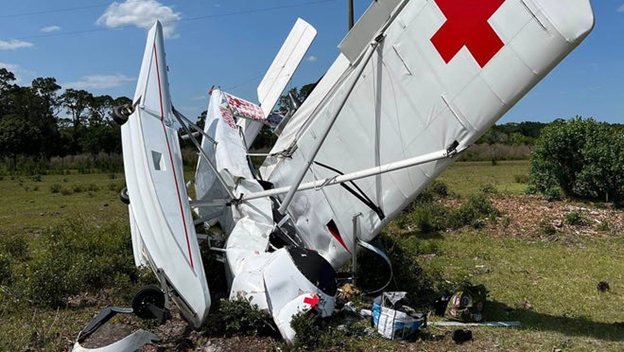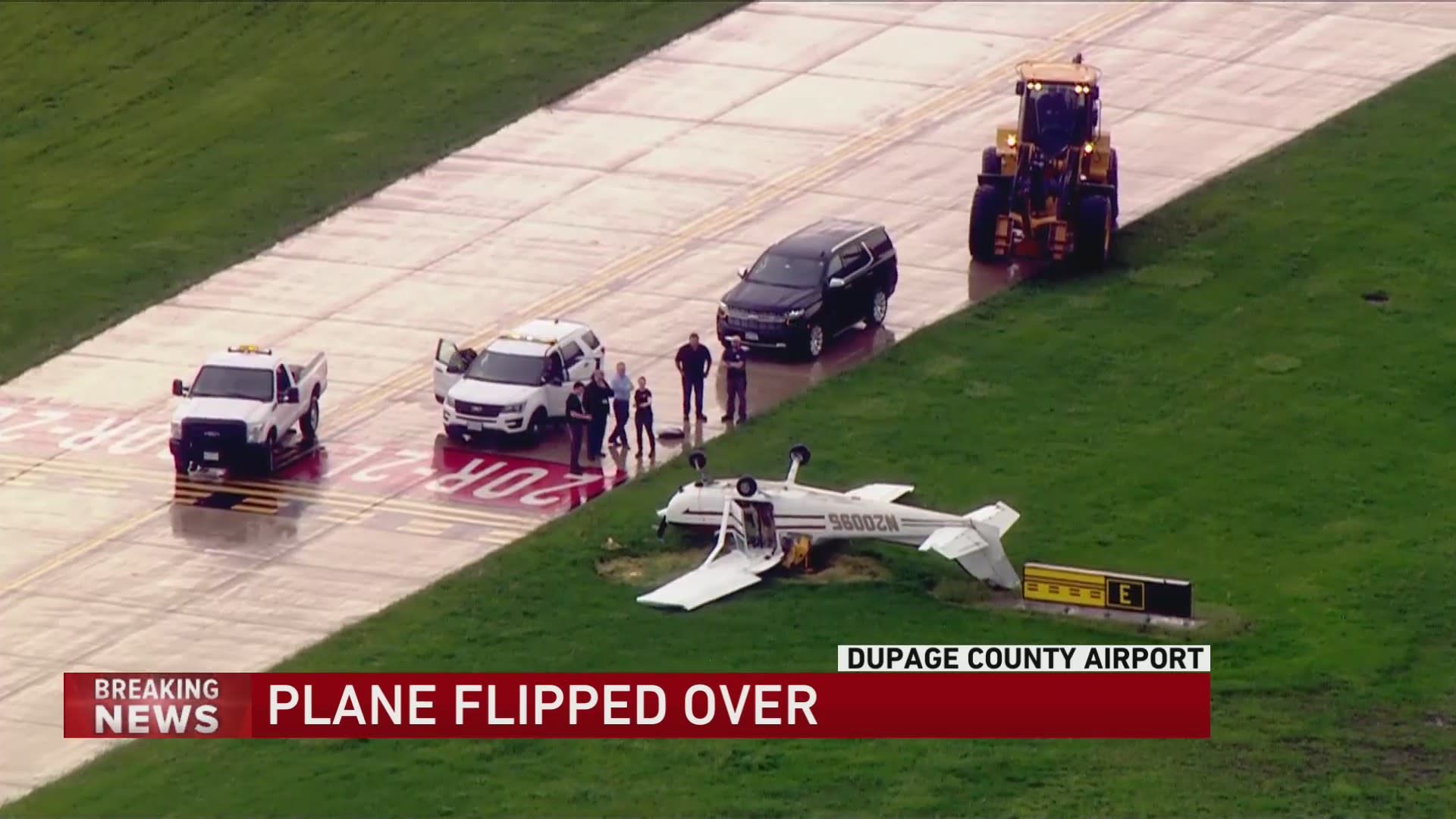ARFF Daily News
Published on:
Friday the 3rd of May, 2024
A twin-engine plane crashed in a field in DeLand Thursday afternoon injuring the pilot
Sheldon Gardner - Daytona Beach News-Journal
A twin-engine plane crashed in DeLand Thursday afternoon in a field off Eidson Drive near State Road 11 at around 2:20 p.m., seriously injuring the 72-year-old male pilot, who was taken to the hospital as a trauma alert, according to authorities.
No one else was on board, according to the Federal Aviation Administration, which will investigate the accident along with the National Transportation Safety Board. The plane crashed very near the DeLand Municipal Airport.
Where did the DeLand plane crash happen?
"It looks like it's some kind of cow pasture," Vicki Karr, public safety spokeswoman for the city of DeLand said of where the crippled airplane ended up.
What kind of plane crashed in DeLand?
The FAA identified the craft as a twin-engine Admore Aircam. According to a company website, the "AirCam is a twin-engine open cockpit experimental amateur-built aircraft designed and engineered with safety, visibility, and versatility in mind."
Police were on the scene, but no further details were immediately available.
DeLand Municipal Airport Manager John Eiff declined to name the pilot but said he is from Ormond Beach. The man is believed to be from Switzerland originally. He said the man recently leased some property to build a hangar at the airport. He said he went to lunch in Spruce Creek and was on his way back to meet someone when the crash occurred.
Jason Merrill and Juliet Benoit-Talbot were driving by and stopped to observe the scene. They live nearby and use Eidson Drive as a cut-through road. "We usually see cows and stuff out here in the field. Not planes, though," Jason Merrill said.
"We hope that everyone is all right," Benoit-Talbot said.
https://www.news-journalonline.com/story/news/local/volusia/2024/05/02/plane-crash-in-deland-injures-one/73545327007/



Pilot walks away from helicopter crash near Harvest Vista east of Lewiston
By Eric Barker Lewiston Tribune
The pilot of a helicopter that crashed in a field east of Lewiston on Thursday morning was able to walk away from the wreckage and to medics as they arrived on the scene.
Pilot Drew O’Harra, 32, of Lewiston, was taken to St. Joseph Regional Medical Center in Lewiston for treatment of minor injuries. He was listed in good condition Friday afternoon.
O’Harra was applying fungicide to a wheat field on Schaub Ranch, which is near Harvest Moon Lane in the Harvest Vista Subdivision. O’Harra was making his last pass when the helicopter clipped a power line and crash-landed on the edge of a steep canyon.
“It would have been a whole different outcome if he would have landed about another 10 feet to the north,” said Bill Hobbs, owner of Schaub Ranch. “He would have been down there in the canyon.”
The helicopter was totaled.
“Those things can be replaced but somebody getting hurt, seriously injured or dead is a different thing,” Hobbs said.
The crash happened at about 11:20 a.m. Thursday.
Emergency personnel from the Lewiston Fire Department, Wheatland Fire Protection District and the Nez Perce County Sheriff’s responded to the crash that is under investigation by the Federal Aviation Administration.
https://www.lmtribune.com/pilot-walks-away-from-helicopter-crash-at-cougar-ridge-near-lewiston-with-video/article_b7e10366-08bd-11ef-a54a-13c9ec3868f1.html

Plane overturns due to high winds at DuPage County Airport
Andrew Smith
WEST CHICAGO, Ill. — A plane has overturned Thursday at the DuPage County Airport due to high winds.
Skycam 9 was over the airport around 5 p.m. and saw a plane overturned near a runway. The Federal Aviation Administration says two people were on board when it overturned. It’s not clear if they were injured.
The plane, a single-engine Cessna 172, is registered to a leasing company in Wichita, Kansas.
Online flight records show the plane was scheduled to take off at 4:42 p.m. It’s not clear if the plane was attempting to take off when it overturned, however, it appears the plane was on a taxiway when it overturned.
The FAA said it was stopped at the airport when it flipped over due to high winds.
According to the National Weather Service, a 55 mph wind gust was reported around the time the plane overturned.
WGN News has reached out to the Federal Aviation Administration and National Transportation Safety Board to see if they are investigating the incident and is awaiting a response.
https://www.yahoo.com/news/plane-overturns-dupage-county-airport-222231021.html

NTSB Final Report: Cirrus Design Corp SR20
Student Pilot Reported That During Rotation, “All Of A Sudden The Back Of The Plane Kicked To The Right..."
Location: Aitkin, Minnesota Accident Number: CEN24LA138
Date & Time: March 18, 2024, 17:00 Local Registration: N788JN
Aircraft: Cirrus Design Corp SR20 Aircraft Damage: Substantial
Defining Event: Loss of control in flight Injuries: 1 None
Flight Conducted Under: Part 91: General aviation - Instructional
Analysis: The student pilot reported that during rotation, “all of a sudden the back of the plane kicked to the right and at the same time caused me to takeoff [to] the left.” He attempted to abort the takeoff; however, the airplane impacted marsh terrain adjacent to the left side of the runway. The airplane sustained substantial damage to right wing and main wing spar. He reported that he was aware of crosswind conditions at the time of the takeoff but not too concerned because he had landed and took off in those conditions on previous flights. Postaccident examination of the airplane revealed no evidence of any preaccident mechanical malfunctions or failures that would have precluded normal operation.
Probable Cause and Findings: The National Transportation Safety Board determines the probable cause(s) of this accident to be -- The student pilot’s failure to maintain directional control during the takeoff in crosswind conditions.
FMI: www.ntsb.gov

Today in History
56 Years ago today: On 3 May 1968 a Braniff Airways Lockheed L-188 Electra broke up in turbulence and crashed near Dawson, TX , killing all 85 occupants.
Date: Friday 3 May 1968
Time: 16:48
Type: Lockheed L-188A Electra
Owner/operator: Braniff International Airways
Registration: N9707C
MSN: 1099
Year of manufacture: 1959
Total airframe hrs: 20958 hours
Engine model: Allison 501-D13A
Fatalities: Fatalities: 85 / Occupants: 85
Aircraft damage: Destroyed, written off
Category: Accident
Location: 1,6 km E of Dawson, TX - United States of America
Phase: Take off
Nature: Passenger - Scheduled
Departure airport: Houston-William P. Hobby Airport, TX (HOU/KHOU)
Destination airport: Dallas-Love Field, TX (DAL/KDAL)
Investigating agency: NTSB
Confidence Rating: Accident investigation report completed and information captured
Narrative:
Braniff Flight 352 departed Houston (HOU) at 16:11 for a flight to Dallas (DAL) and climbed to FL200. Some 25 minutes into the flight, the L-188A Electra was approaching an area of severe thunderstorm activity. The crew requested a descent to FL150 and a deviation to the west. ARTCC then advised the crew that other aircraft were deviating to the east. The Electra crew still thought it looked all right on the west and were cleared to descend to FL140 and deviate to the west. At 16:44 the flight was further cleared to descend to 5000 feet. At 16:47 the aircraft had apparently encountered an area of bad weather, including hail, and requested (and were cleared for) a 180deg turn. Subsequent to the initiation of a right turn, the aircraft was upset. During the upset, N9707C rolled to the right to a bank angle in excess of 90deg and pitched nose down to approximately 40 degrees. A roll recovery maneuver was initiated and the aircraft experienced forces of 4,35 g. Part of the right wing failed and the aircraft broke up at an altitude of 6750 feet and crashed in flames a little later.
PROBABLE CAUSE: "The stressing of the aircraft structure beyond its ultimate strength during an attempted recovery from an unusual attitude induced by turbulence associated with a thunderstorm. The operation in the turbulence resulted from a decision to penetrate an area of known severe weather."

Mailing Address
Subscribe to our newsletter
Contact Us
We will get back to you as soon as possible.
Please try again later.
